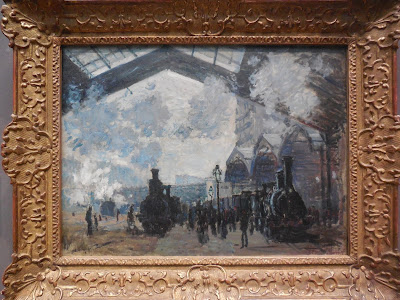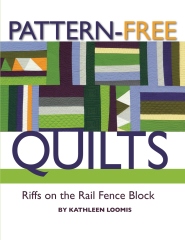I can't help it, I'm a sucker for Monet. I know that Impressionism is so easy to love, requiring not much rigor, not much sophistication, but still I love it. And Claude is my favorite of them all. Yes, even more than Cezanne, although I'll lose art brownie points for admitting it.
So what a pleasure to find lots of Monets at the National Gallery in London. Some seemed very familiar: water lilies, a train station, a Japanese bridge, boats on the Seine, snow on the countryside. Because Monet so frequently painted long series of the same scene, exploring different conditions of light, you feel you're seeing old friends even if you've never come across this particular picture in person.
In particular, it felt like old home week to come upon a huge water lilies panel, on the same scale as those in the Orangerie in Paris (built specifically to house Monet's grand gift to the French people) and those at MOMA in New York. I have spent a lot of time sitting in front of those lilies, drifting happily through that horizonless universe. Sitting down with this one brought me back to that familiar reverie.
Claude Monet, Water-Lilies, Setting Sun, ~1907
Claude Monet, The Water-Lily Pond, 1899
Claude Monet, The Gare St-Lazare, 1877
Claude Monet, The Petit Bras of the Seine at Argenteuil, 1872
Claude Monet, Snow Scene at Argenteuil, 1875
Claude Monet, Bathers at La Grenouillère, 1869
























































